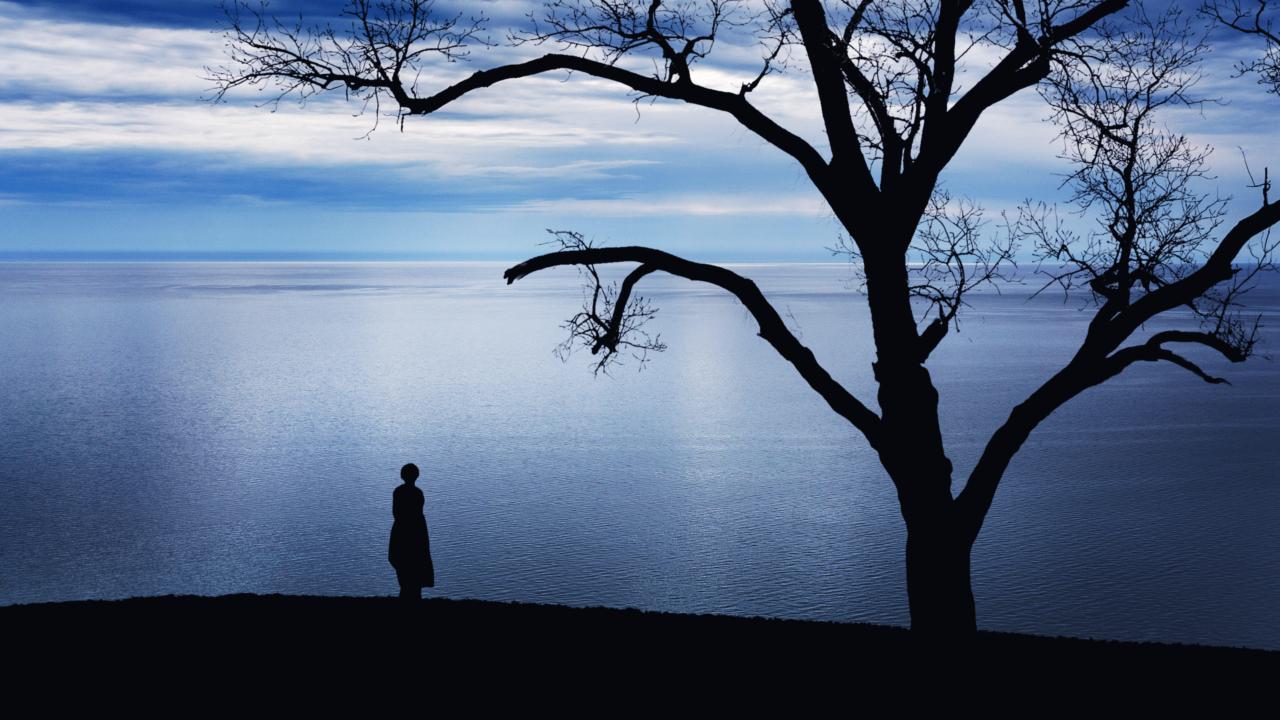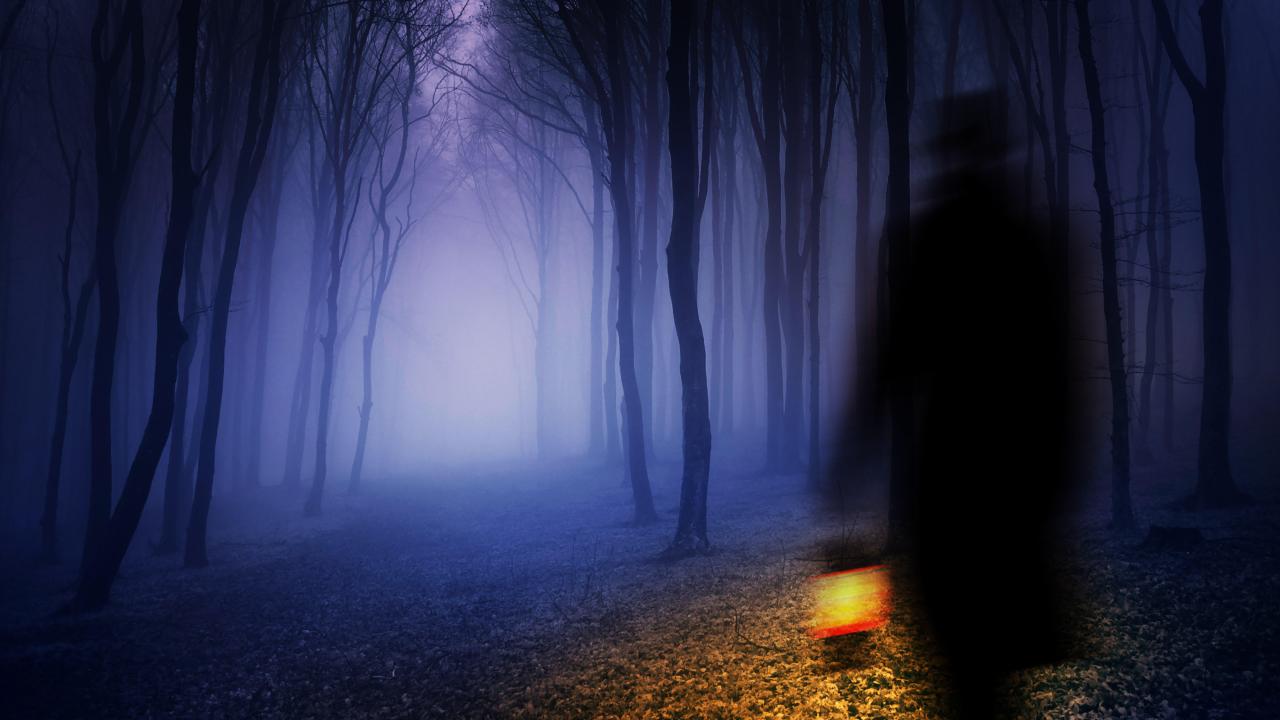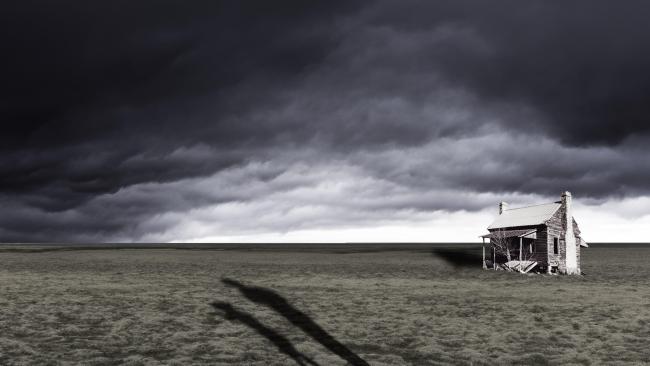On Display at GRCC’s Paul Collins Art Gallery During ArtPrize 2024
9/13/24
Is it real? Is it literal? And are these the right questions to be asking as you view art?
Andrew Caldwell is leaning into the hot discussion around artificial intelligence (AI) as he uses it to bring his unique story to life.
“I spent a recent sabbatical exploring my family genealogy,” Caldwell said. “My mom is West Michigan Dutch and my dad is Black. Many of my mom’s relatives have documented their genealogy and done a great job of tracing it back. On my dad’s side, not much had been done. I set out to find answers.”
Caldwell traced his Black ancestry back to the 1800s, following a twisting trail through Michigan, Arkansas, Tennessee, Mississippi, Alabama and North Carolina. The process opened his eyes to migratory patterns in the United States, as his ancestors moved, willingly and unwillingly, around the country. For many people, the promise of a better life — the “Promised Land” — was a siren call that led them all over this country. Caldwell’s own family followed that same call this summer, coming to Grand Rapids where he is now teaching photography and videography at GRCC.
Caldwell was able to uncover his Dutch ancestry with ease. However, when tracing his Black ancestry, he encountered an informational dead end in the 1800s. This is not unusual: most Black Americans come up against it. However, that is hard to swallow.
“I ran into the wall of slavery,” Caldwell said. “When you go far enough back, Black Americans are namelessly counted as property, not people. It’s painful to come face to face with the reality that at one time, my ancestors were monitored like livestock. It becomes clear pretty quickly that many details about my ancestors will just never be known.”
Caldwell loves maps and he has a vivid imagination. So for him, this year’s ArtPrize exhibit is a way to imagine and create scenes that reflect what his family might have experienced.
“My project started with images from an old family album, which inspired both my genealogy search and this art project,” Caldwell said. “I found many images of Black Americans from the same areas and times of my ancestors. I realized some of my family members could be in those pictures and I wouldn’t know it, since most list only the place. The scenes I’m creating are made up of parts of these found images, my family album, and images taken during trips to the places my ancestors have lived. Then I used Photoshop and other digital tools to create the scenes, while incorporating new AI developments to help construct and animate the scenes. It’s really important for my imagery to be photo-based, so I’m using AI as a utility to bring my vision to life, similar to how I use Photoshop.”

Caldwell’s entry this year is in the New Media category. As he says, it’s a great place to put anything that’s hard to categorize.
“I’m creating a series of scenes that merge people and images. I’m envisioning what things could have looked like. Then I write prompts for AI to animate the stills. I’m guiding the creative process and using my artistry to create the prompts. The work is not intended to be literal. In fact, I deliberately include things that, on second glance, reveal the creative nature of the work.”
For Caldwell, using AI allows him to push creative and technical boundaries while infusing his work with mystery.
“I don’t want people to think it’s real,” Caldwell said. “It’s video purporting to be from the 1800s. Intellectually, you know that’s not possible. I’m not trying to create a false archive. Instead, it’s a hypothetical view of how things might have been. It reflects my journey and allows me to tell more interesting stories.”

Caldwell is excited to be joining the GRCC faculty this fall. He and his family are looking forward to participating in more of the ArtPrize experience.
“My favorite reactions come from the kids,” Caldwell said. “They are so honest. I love watching their brains at work and I’m amazed by what they think and see.”
For Caldwell, this year’s ArtPrize entry is a milestone.
“My prior work expressed where I was as an individual,” Caldwell said. “This new piece taps into something with more meaning and purpose. It goes beyond me and speaks to a shared cultural experience.”
You can learn more about Caldwell and his work via his website.
GRCC will be hosting six ArtPrize entries in the Paul Collins Art Gallery, located on the fourth floor of the Raleigh J. Finkelstein Hall at 143 Bostwick Ave. NE. ArtPrize is open to the public from September 13-28, 2024. Learn more about the competition, venues, artists and voting.
